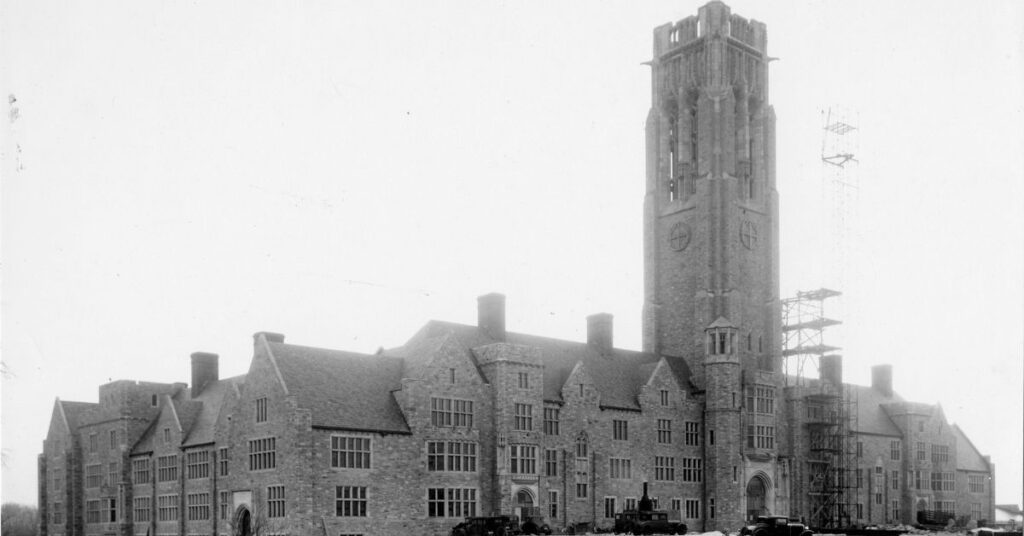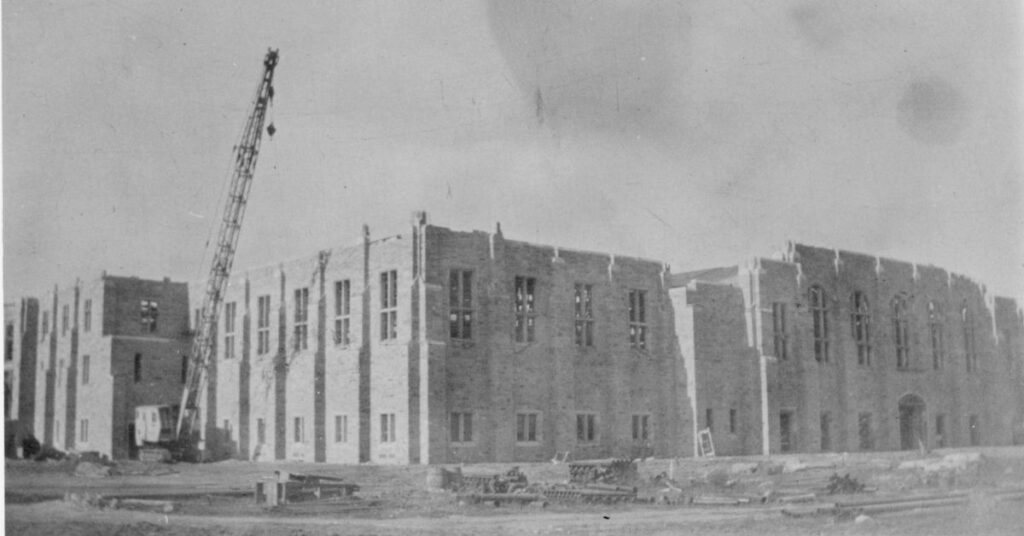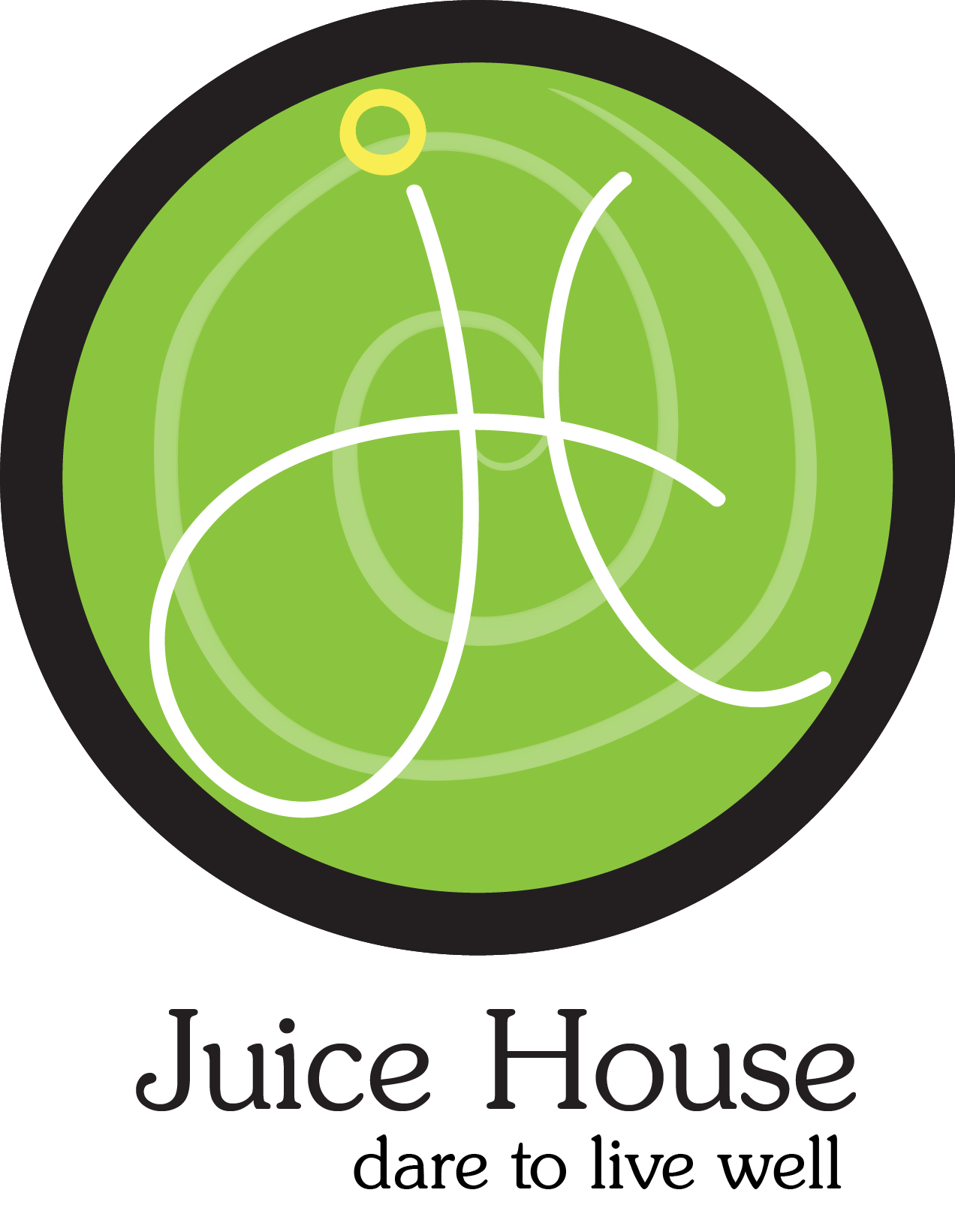“All people take pride in cities — in them naturally concentrate the great minds on the great wealth of the nation. The arts that adorn life are cultivated there, and from them flows out the knowledge that gives its current thought to the natural mind.” — Jessup W. Scott, 1848.
As the founder of the University of Toledo, Jesup W. Scott had a vision for the betterment of his fellow man in this region, Barbara Floyd, former university archivist and author of “An Institution for the Promoting of Knowledge: The University of Toledo at 150” shared at a lecture for the sesquicentennial celebrations. The event was held in the main branch of the Toledo Lucas County Public Library and focused on how that generous and forward-thinking vision has shaped the University throughout its history.
According to Floyd, Jesup Scott put in both money and passion: in 1872, he endowed over 160 acres of land to establish a university, an institution that he believed would be vital to the city’s development and as a future great city of the world. Unfortunately, Scott didn’t live long enough to see his vision realized — he died just two years after bequeathing the land for the establishment of the University. But even in its beginning, the University was progressive, providing opportunities for women alongside men to receive training.
But the struggle for both recognition and financial stability remained a constant challenge in the University’s first decades. Its early leaders had to compete for — and often lost out of — funds from the city.
According to Floyd, “The city announced it had budgeted $2,400 for the university, the exact amount it was planning to spend on an elephant for the zoo.” This was a slap in the face of then-President Raymond, who heralded from the University of Chicago. The University even briefly closed its doors due to a lack of funding and changed locations several times throughout its early years.
Yet Jesup Scott’s vision for the university continued on through other visionaries, particularly Dr. Henry Doermann. As president, he saw the need for a permanent location and pushed for a levy that, through the support of Toledoans, raised enough to build University Hall and the Memorial Field House on Bancroft, the final home for the University. The buildings were completed in 1931, at the height of a nationwide economic depression, showing the vitality and determination to see through the success of this institution for the next generation of students.

The iconic bell tower at the center of University Hall is more than just an old, gothic-looking architectural structure; it’s a marker of Jesup Scott’s vision of the institution carried forward by President Doermann. In keeping with Scott, he sought to build an institution with an environment that encouraged students to pursue higher education. University Hall and Field House were built at his insistence in the collegiate gothic style of European institutions, even in the face of fierce pushback on what was considered expensive building costs and extravagant architecture during such dire economic conditions.
In particular, Floyd noted Doermann’s passion in telling the students, “We believe you’re going to respond to the challenge of a beautiful environment, that the traditions which have grown up about this noble architecture will stimulate you to greater efforts and learning and fine decorum and resolve to use your education to further truth, justice and beauty. This is our faith in you.”

Throughout her lecture, Floyd chronicled how later University leaders continued to open up opportunities for student growth and expansion to non-traditional students, such as those that returned after World War II. The University built special cost-efficient, small-family housing that financially benefited students, so much so that they fought to keep it even when the buildings became dilapidated decades later. Much of the university’s progress to reach today is based on the forward-thinking visionaries in the face of financial and legal challenges that have been repeated throughout these 150 years.
The University of Toledo of today, complete with a medical campus from the merger, is the work of those who have held the course for the improvement of the institution and the population it serves, “both from outside of Toledo and outside of the United States,” Floyd said.
At the closing of the discussion, audience members were eager to ask for more details, particularly on moments of challenge, such as the merger and political climate surrounding these decisions.
Barbara Floyd will be giving another presentation on Thursday, April 20th from 4 to 5 p.m. on Health Science Campus in the Health Education Building on the history of the medical campus and has published a recent book offering more background and insight into the institution that has become the realization of Jesup Scott’s vision today.


